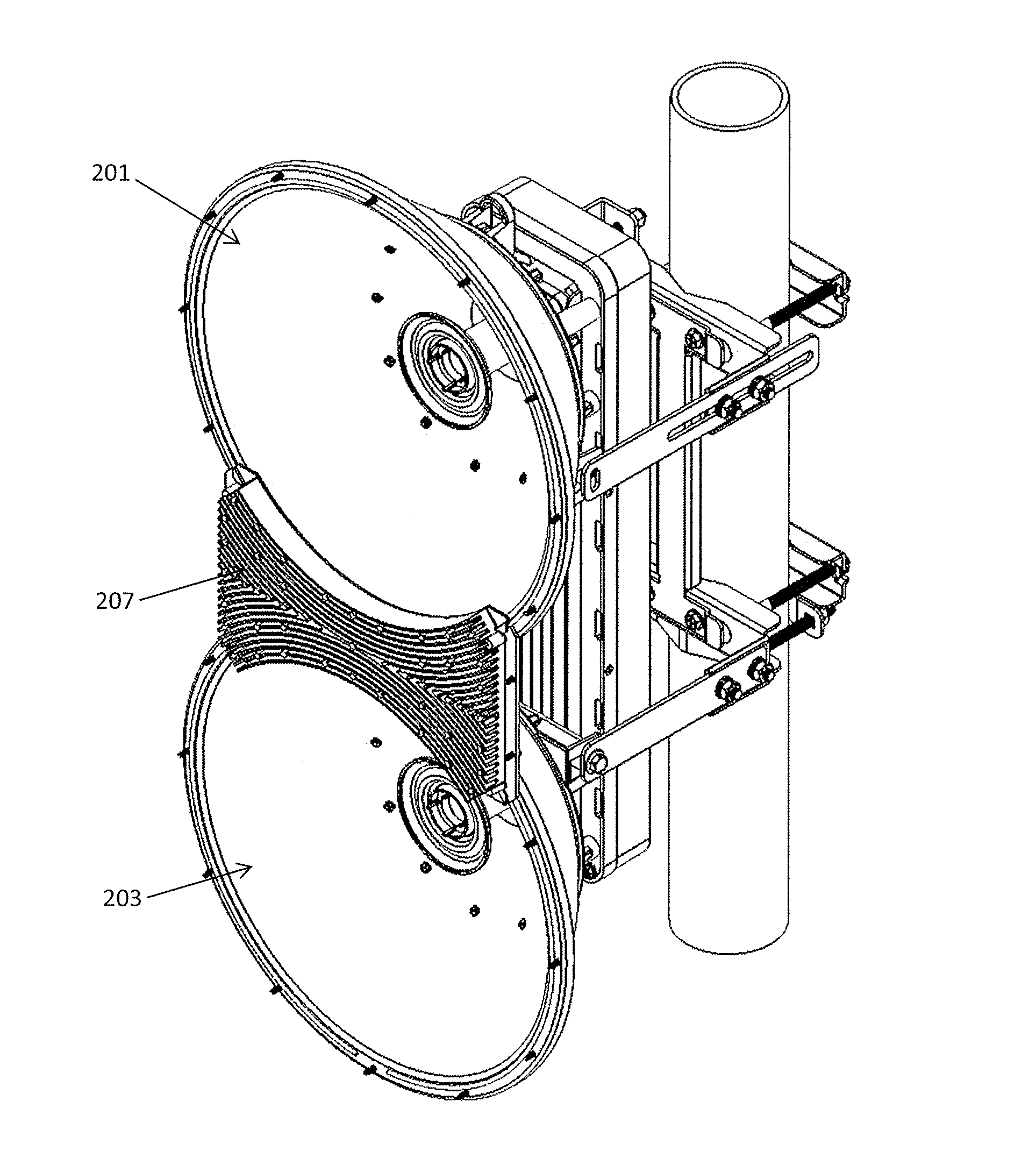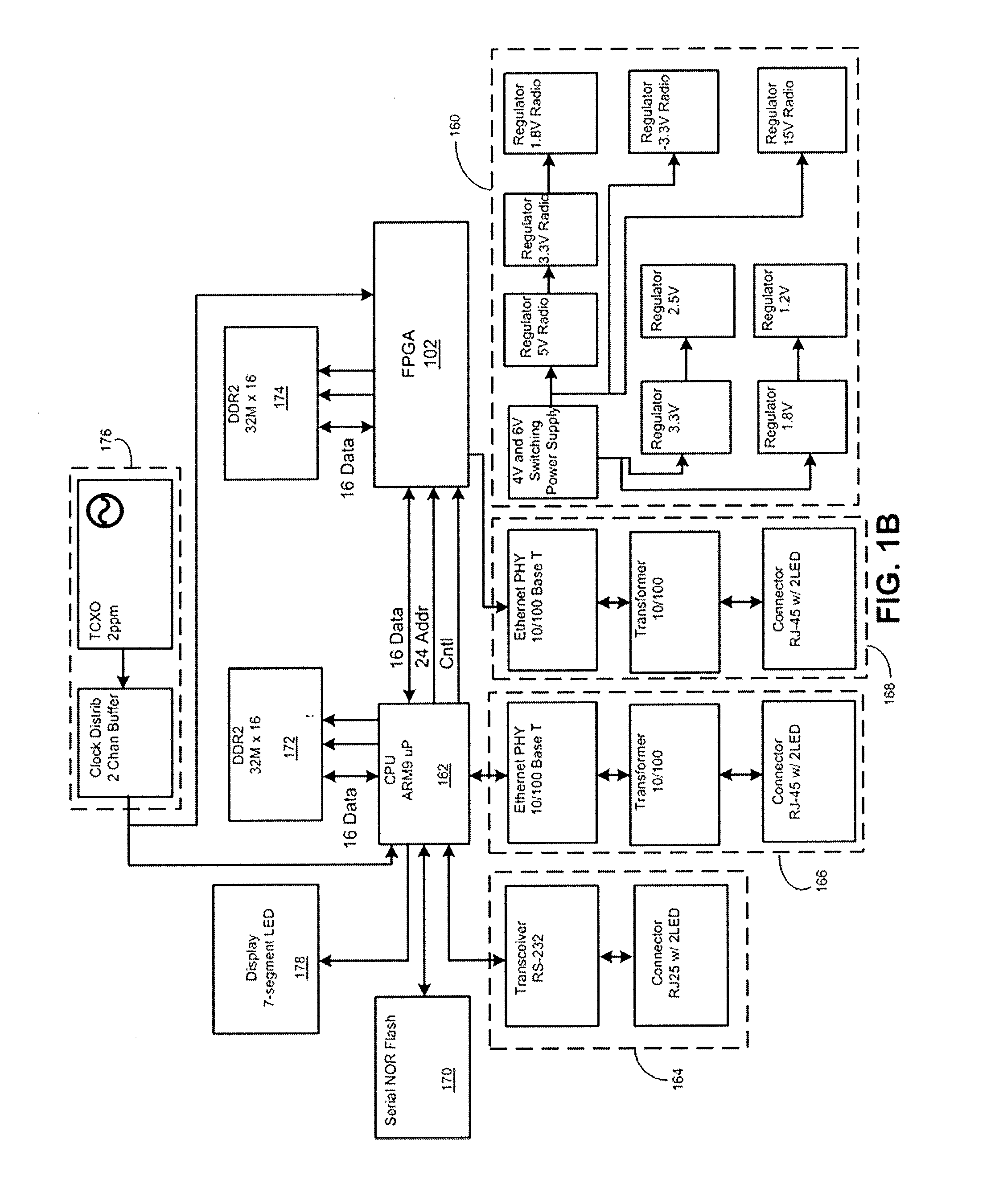Dual receiver/transmitter radio devices with choke
a radio device and receiver technology, applied in the field of wireless communication systems, can solve the problems of not being economically feasible to lay new fibers, not being able to extend the reach of optical fibers to sparsely populated areas, and being limited in the application of optical fibers, so as to increase the rigidity of the overall device/system
- Summary
- Abstract
- Description
- Claims
- Application Information
AI Technical Summary
Benefits of technology
Problems solved by technology
Method used
Image
Examples
Embodiment Construction
[0225]Described herein are radio devices for point-to-point and / or point-to-multipoint transmission of high bandwidth radio signals. These devices may include radio apparatuses (devices / systems) used for high-speed, long-range wireless communication.
[0226]In general, these radios may include a dedicated transmit reflector (connected to one or more transmitters), and a dedicated receiver reflector (connected to one or more receivers). The dedicated transmit and receive reflectors may be held in a fixed relationship with each other. In some variations the devices and systems may also be configured so that the circuitry for the radio is held on a single board, which connects to both the transmitter antenna feed, connected to the transmitter reflector, and the receiver antenna feed, connected to the receiver reflector. The two reflectors may be adapted for use in any appropriate frequency range, including, e.g., the 5 GH frequency range, the 11 GHz frequency range, the 13 GHz frequency ...
PUM
 Login to View More
Login to View More Abstract
Description
Claims
Application Information
 Login to View More
Login to View More - R&D
- Intellectual Property
- Life Sciences
- Materials
- Tech Scout
- Unparalleled Data Quality
- Higher Quality Content
- 60% Fewer Hallucinations
Browse by: Latest US Patents, China's latest patents, Technical Efficacy Thesaurus, Application Domain, Technology Topic, Popular Technical Reports.
© 2025 PatSnap. All rights reserved.Legal|Privacy policy|Modern Slavery Act Transparency Statement|Sitemap|About US| Contact US: help@patsnap.com



